Historical Background
Nakajima commenced the design of the Ki-84 in early 1942 to meet the Imperial Japanese Air Force's requirement for a replacement to Nakajima's own Ki-43 Hayabusa, then just entering service. The specification required the maneuverability of the Ki-43 with performance to match the latest Western fighters and heavy armament. The prototype first flew in March 1943 and the new aircraft addressed three shortcomings of the Hayabusa : poor protection, insufficient firepower and lack of climbing power. The Ki-84 used armoured glass of 65mm thick as canopy, 13mm of head and back armour and multiple bulkhead to protect water-methanol injection tank and the fuel tank. Armament comprised of two 12.7mm machine guns in the fuselage and two 20mm cannons in the wings. The Ki-84 was powered with Nakajima Ha-45 radial engine which was rated at 2,000hp on take-off. This theoretically gave it a performance roughly competitive with Allied fighters. In initial tests, the Ki-84 reached maximum level speed of 624km/h in the second prototype. The new aircraft was nicknamed Hayate (Gale). The Hayate went into full production in April 1944 and entered combat in August 1944 with the 22nd Sentai in China.However, the Allied advance which resulted in shortage of raw materials together with poor quality control and lack of skilled pilots meant the Ki-84 never reached its full potential. If everything worked correctly, the Ki-84 was more than a match for the P-47 Thunderbolt and even the P-51 Mustang, especially at medium and low levels. Aircraft quality differed even within the same unit. It was said that the pilots drew lots to see who would pilot the fully functioning aircraft and who would get in the cockpit of the lemons. As the fighting gets closer to the Home Islands, even the Hayate was not spared in conducting one-way Kamikaze missions, despite (or perhaps because of) its performance against the American fighters. The Ki-84, together with Ki-100 and N1K2-J were considered the best Japanese fighters of the war. The Ki-84 was given the Allied reporting name 'Frank' and designated 'Army Type 4 Fighter' by the Japanese Army. 3,514 aircraft were built.
The Kit
This particular kit was one of Hasegawa's reboxings of their 1990s / early Noughties release of the Ki-84. The kit features very nice moulding and have crisp panel lines.There were also grommets to allow parts to be fitted without glue. The cockpit parts looked well-detailed and the clear parts were thin. Decals were provided for two aircraft, both from the 22nd Sentai: Major Iwasaki Jyazo, Initial Production aircraft #85, China, September 1944 and a green and silver/bare metal painted aircraft, Korea 1945.
Construction
The cockpit was painted Tamiya XF-71 Interior Green overall. The details were picked in silver, red and black. The seat cushion was painted Tamiya XF-57 Buff and the machine gun breeches were painted XF-1 Flat Black. The breeches were later polished with graphite from a 2B pencil. I used the provided decals for the instrument panel, which, after the Mr Mark Softer treatment, looks the part. The cockpit assembly, along with a grommet for the tail wheel were trapped between the fuselage halves.The flying surfaces assembly were next. The landing light and the grommets for the wing pylons and mainwheel were placed in their respective slots before the upper and lower wing halves were mated together. The horizontal stabilisers were mated through interlocking tabs and were a perfect fit. The rudder came in two halves.
The next area was the front fuselage. The reduction gear was painted silver whilst the cylinders were painted steel. Hasegawa provided two style of cowl flaps and exhausts - early and late type. I had decided earlier on that I do not want to build any of the kit markings. Browsing the internet, I found out that the aircraft I intended to build has the later type exhausts. So I use the indicated parts for the later-type exhaust. The cowling interior was painted XF-71 before the entire assembly was glued to the fuiselage.
Painting and Decaling
As stated before, Hasegawa provided two marking schemes for this boxing of their Hayate. As the sub-title implies, both options were from the 22nd Sentai. The first is an early Hayate in brown with green patches and the second in green. Both options have silver undersides. However I decided to build a different aircraft. I still have leftover decals from my earlier Tamiya Hayate and I intended to build a machine from the 58th Shimbu-Tai (Special Attack Squadron aka Kamikaze based at Miyakonojo airfield in Honshu) flown by 2nd Lt. Yasushi Tominaga with its skull-and-crossbones insignia. The aircraft was painted in green and grey-green. First I sprayed the upper part of the model with Tamiya TS-30 Silver Leaf and then the green portion was painted using Tamiya XF-13 JA Green whilst the grey-green was painted using XF-14 JA Grey. Once the paint had dried, I used Dymo tape to rip up the JA Green, concentrating on high-use areas. The prop blades were painted Gunze H312 Light Green and the spinner XF-7 Flat Red.With the exception of the squadron insignia and aircraft number, I used all of the kit's decals. Hasegawa's decals remain quite thick but at least the white parts were white, and not ivory as in their previous kits. The 58th Shimbu-Tai's insignia came from the spares box. It looked a bit aged and quite difficult to came off the backing paper and I had to give extra care. It all went well however and all the decals were given the Mr Mark Softer treatment.
Finishing
The remaining parts such as the aerial, pitot tube, drop tanks and landing gears can now be glued to the model. I added a bit of Tamiya Weathering Master 'Soot' for exhaust stains and sludge wash for the panel lines. Finally Tamiya TS-80 Flat Clear was used to wrap up the build.
Conclusion
Hasegawa's Hayate is one of their best products in 1/48 scale and it was easy to build. In words of one modeler, it makes an average modeler good and good modelers even better, just like the real plane (it was easy to fly, even for pilots coming from the abbreviated training syllabus)

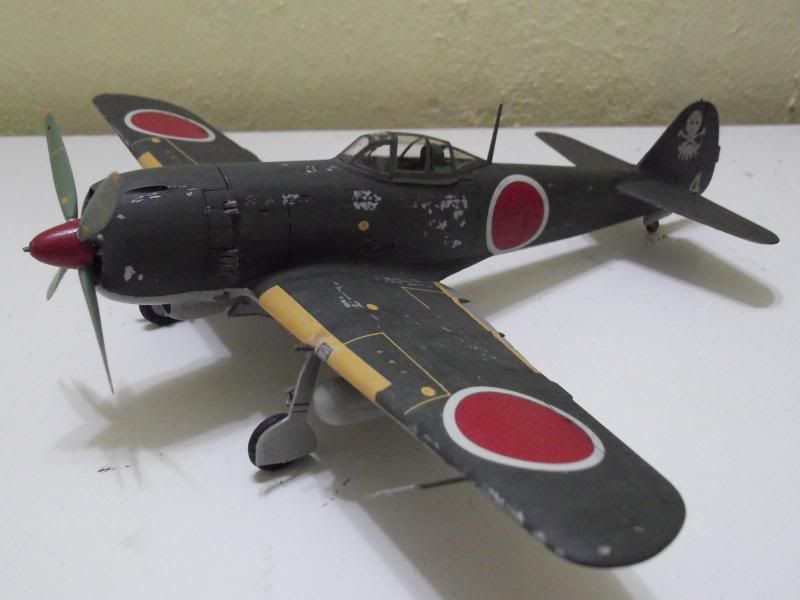
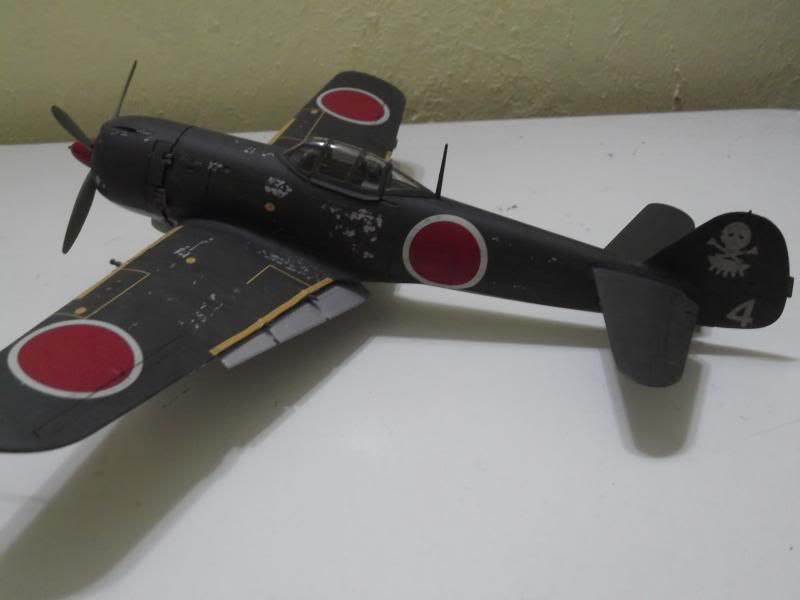
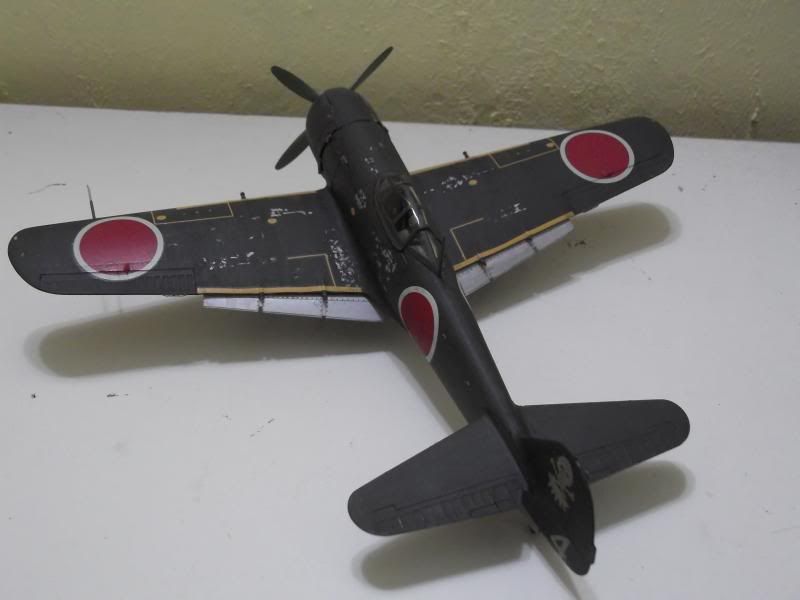
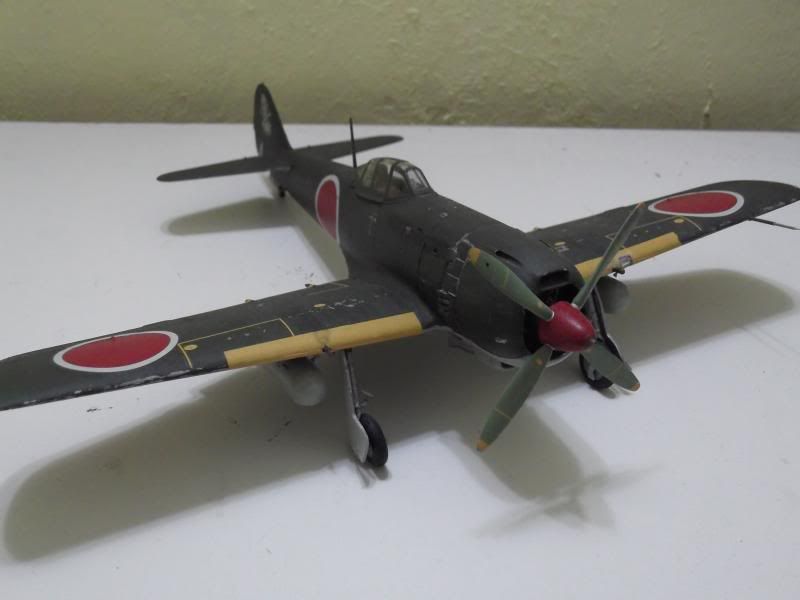
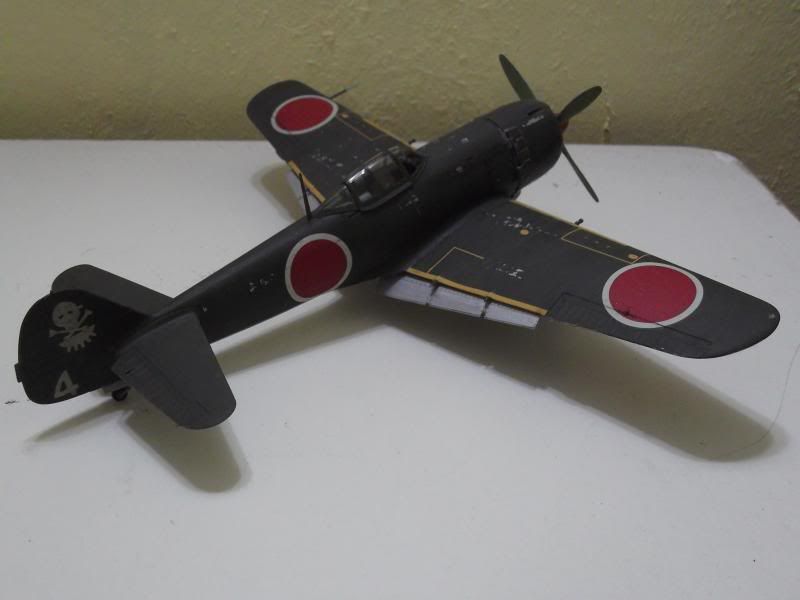
No comments:
Post a Comment